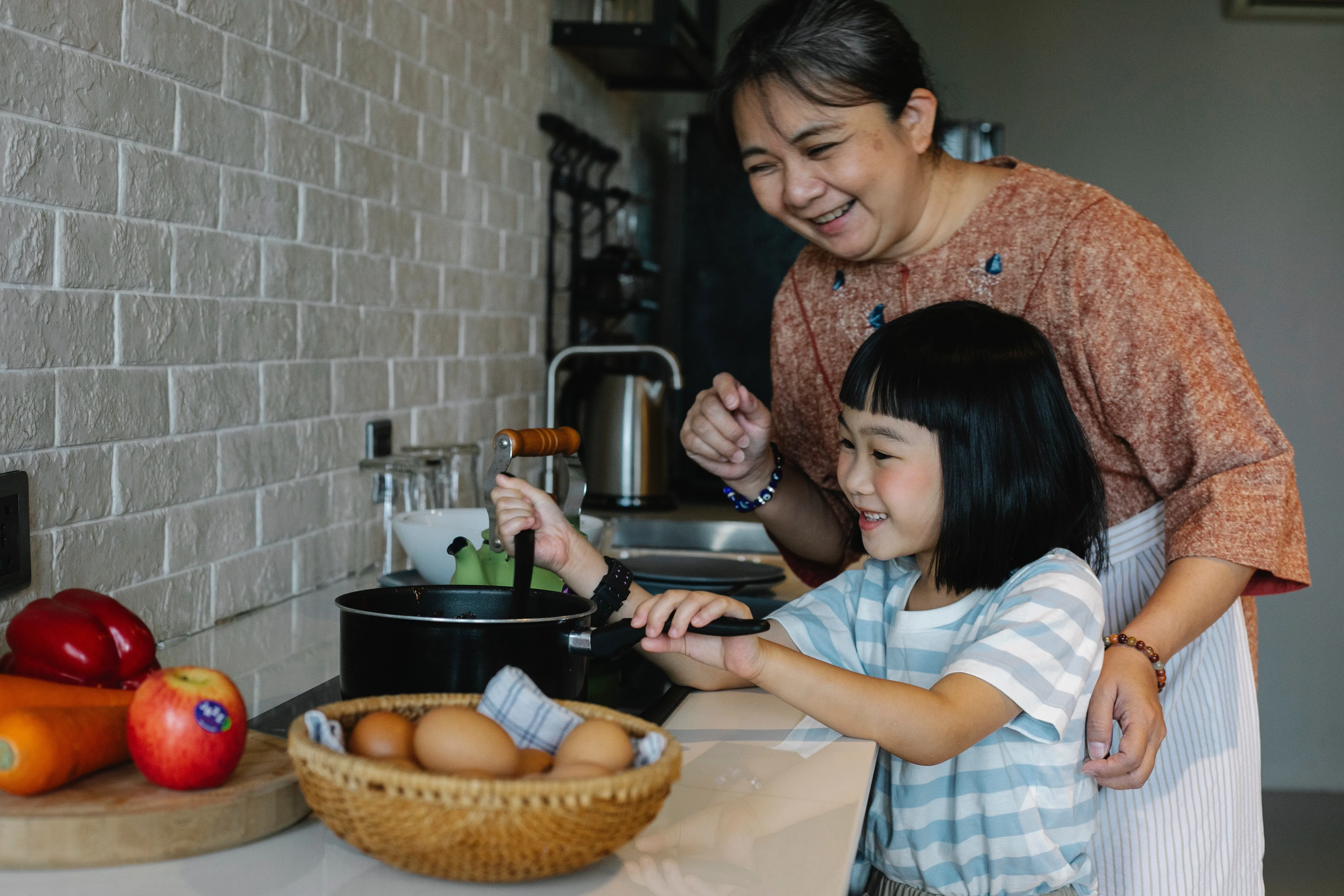National Burn Awareness Week 2022

The American Burn Association's Burn Awareness Week is an opportunity to build burn awareness and prevention in our communities. This year, the NBAW 2022 theme is Burning Issues in the Kitchen!
Learn more about National Burn Awareness Week and find more of the ABA's resources at https://ameriburn.org/prevention/burn-awareness-week/.
Watch What You Heat
Cooking is the number one cause of home fires. Here are some kitchen safety tips to prevent a fire inside your home:
- The best time to cook is when you are wide awake, and not drowsy from medications or alcohol.
- Always wipe clean the stove, oven, exhaust fan to prevent grease buildup.
- Wear short or close-fitting sleeves when cooking.
- Keep a pan lid and dry potholders or oven mitts near you EVERY time you cook.
- Turn pot or pan handles toward the back of the stove.
- When heating food in the microwave, use microwavesafe cookware that allows steam to escape.
- Allow food to rest before removing from the microwave.
- When frying, use a pan lid or splash guard to prevent grease splatter.
- Stay in the kitchen while you are frying, grilling, or broiling food. If you leave, turn off the stove.
- If you are simmering, baking, roasting, or boiling food, check it regularly. Remain in the home while food is cooking, and use a timer to remind you to check on your cooking.
- After cooking, check the kitchen to make sure all burners and other appliances are turned off.
If your food does catch on fire?
- Cover the pan with its lid. A cookie sheet works too. Leave covered until the pan is cool. NEVER move the pot or carry it outside - the pot is too hot to handle and the contents may splash, causing a severe burn.
- Turn the heat off. With the lid on and the heat off, the fire should quickly put itself out. NEVER use water to put out a kitchen fire. Water will cause the oil to splatter and spread the fire, or scald you as it vaporizes.
- If the fire is inside the oven or microwave, keep the door shut and turn it off. Keep closed until the oven is cool.
- If the fire gets out of control- get out, stay out and call 9-1-1. Don’t return inside for any reason.
Fall Prevention Can Mean Burn Prevention
There are plenty of other hazards that can result in burns, and in some cases, fall prevention can mean burn prevention. Below are a few tips for further reducing your risk of burns in your day-to-day life:
WHAT IS A CONTACT BURN?
A contact burn is a burn injury that occurs when the skin comes into contact with a hotsurface. Pavement or asphalt is a common surface that can get dangerously hot when exposed to high air temperatures. At 105∞, the sidewalk temperature can reach 154∞ F, the asphalt 168∞ F. A temperature of 131∞ F will cause a second-degree burn, which can result in at least the top layer of skin being destroyed within a matter of seconds. 90% of pavement-related burns occur when the outside temperature is at least 95∞. People with neuropathy are more likely to suffer contact burns. High temperatures are not easily recognized, and falls leading to contact burns are also increased.
?WHAT IS A FRICTION BURN?
A friction burn is an injury caused by skin rubbing against an abrasive surface. Common surfaces could be asphalt, pavement, rugs, or furniture. Friction burns are a common injury related to falls and can be minor to severe depending on how many layers of skin are removed.
How to help prevent friction and contact burns:
- Always wear well-fitted shoes with thick soles. Doing so will not only protect your feet from contact burns, but will also help prevent a fall outside that could lead to contact with hot pavement. Even if it is just to pick up the newspaper or grab the mail, contact with hot pavement can lead to a second- or third-degree burn within seconds.
- Keep a towel or blanket in the car. This can be placed underneath you should you fall on the cement and not be able to get up.
- Removing clutter, floor rugs, and other tripping hazards can prevent falls that leads to friction burns.
If you sustain a contact or friction burn after a fall, cleanse the area thoroughly with cool water, stopping the burning process and cleansing away any gravel or debris stuck in the open wound. Cover the injury with a clean cloth or gauze and seek medical attention.
Last But Not Least
And of course, wear sunscreen. A tan is the body’s response to injury from UV rays, showing that damage has been done. A ?base tan? only provides a sun protection factor (SPF) of about 3 or less, which does little to protect you from future UV exposure.
WHEN TO SEEK BURN CARE
Any burn injury to the face, hands, or feet or over major joints or genitalia warrants immediate medical attention. A large surface area (>5% of the body) or an injury that has a white, black, or brown discoloration should be evaluated by a burn specialist immediately.
Banner Outpatient Burn Clinic is located at 3838 North Campbell Avenue. To make an appointment to see our specialized burn team, please call (520) 694-6144.

